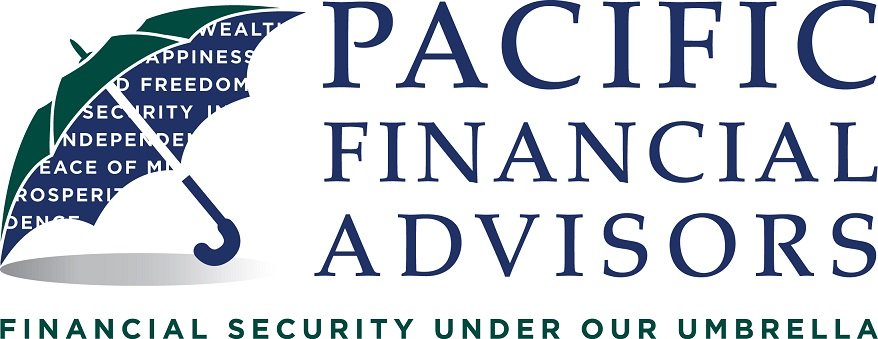Follow the steps and stay on course
This week I have been cooking--a lot. I have a teenaged son, so as soon as I finish one dish, he is ready for the next. I don't know why but I am picturing baby birds here, mouths open, waiting for that next worm. I am not an avid cook by any stretch of the imagination, but I have found that if I follow the steps and stay on course, I typically end up with results that I am happy with. It is the same over here at Pacific Financial Advisors, where we follow a process in order to help you achieve the goals you have set. People often ask me if financial planning is a "one and done" procedure. Nothing could be further from the truth. Planning for your future takes time, consideration, strategy, and a lot of work. Here are some of the steps we take when we work with you:
Discovery:
This initial meeting is designed to help us gain a better understanding of your specific needs and objectives. We discuss your current financial situation, your specific goals, and any challenges you may face as you work forwards those goals.
Establish Goals and Gather Records:
The second step is to help you articulate your goals and priorities. Some people have specific ideas as to what they want to achieve, while others have a more abstract idea. We strive to help you pinpoint exactly what your objective is. At this time, we also begin to gather relevant records, account numbers, etc., so we may begin the process of transferring accounts if that is appropriate for you.
Prepare Your Comprehensive Financial Plan:
During this step we collaborate with various experts throughout the firm--ie attorneys, accountants, etc--to review your existing legal documents, insurance policies, and portfolio holdings. Together, we identify what is working as well as opportunities for improvement. We then built a financial plan that is tailored to your current situation as well as focused on achieving your goals.
Present Recommendations:
At this stage of the process, we present our specific recommendations on how to improve your portfolio. We discuss the potential impact of changes and how we believe our recommendations will help you achieve your goals.
Implement Your Financial Plan:
Once we have a course of action in place, we seamlessly integrate all aspects of the financial plan. This is where you get to take a step back and breathe a sigh of relief, confident that your assets will be working for you!
Review, Update, and Monitor the Plan:
Once you have a completed financial plan, we do not walk you to the door and say good bye, never to concern ourselves with you again. We continuously review, update, and monitor your plan. Needs and goals change over time, so we touch base with you regularly to discuss changes that may affect your planning, and we proactively make changes, in order to ensure that your financial plan helps you continue to achieve your objectives.
Keep in mind that we are fiduciaries.
This is a term that is thrown around quite a bit and it is important to understand. What it means is that we are not only ethically but also legally obligated to act in your best interest. As fiduciaries, we will always begin by first understanding your needs and goals and then evaluating your concerns before recommending any plan of action at all. We will also ensure that you are fully aware of all advantages and disadvantages of any product or service recommended. A non-fiduciary advisor is not required to act in your best interest, and often will not. They follow the suitability rule. This means that the advisor has a reasonable basis to believe that an investment strategy is suitable for the customer. The problem with this is that suitable does not always mean the same thing as best interest. A non-fiduciary financial advisor is not required to tell you how much they are earning and may be influenced by commissions or incentives, meaning they may actually work in their own best interest. There is no legal liability, as there is with a fiduciary.
The other big question we are asked, of course, is about our fee.
We are paid in one of two ways and that is determined with you:
Fee-only:
As fiduciaries, we do not accept compensation as a result of product sales. This means that we will not make any commission from specific investments or other financial products that we recommend. We are paid directly by you--and only by you--either through an hourly fee, a retainer fee, and/or an agreed-upon percentage of assets under management.
Fee-based:
As fiduciaries, we do not charge or earn a commission on any investment-related product. Rather, we are paid by you, either through an hourly fee, a retainer fee, and/or an agreed-upon percentage of your assets under management. The sole difference between these two types of payments is that a fiduciary is legally able to accept compensation as a result of financial product sales, such as insurance or mortgage products, which are not investment products.
In Summary
Hopefully this gives you a clear idea as to the processes we follow here at Pacific Financial Advisors. Our goal is to be clear and upfront, as we evaluate what you need in order to successfully travel down the path towards retirement. As with a good recipe, the steps we take at PFA are virtually guaranteed to lead to success; just ask my 19-year-old, as he waits anxiously for his next meal. I always tell him, a delicious meal requires several steps and patience; a successful retirement strategy requires the same.
I wish you all a happy weekend and for those who celebrate, the most joyous of Easters.
Warmly,
Kimberly Wolf and Your Team at Pacific Financial Advisors


